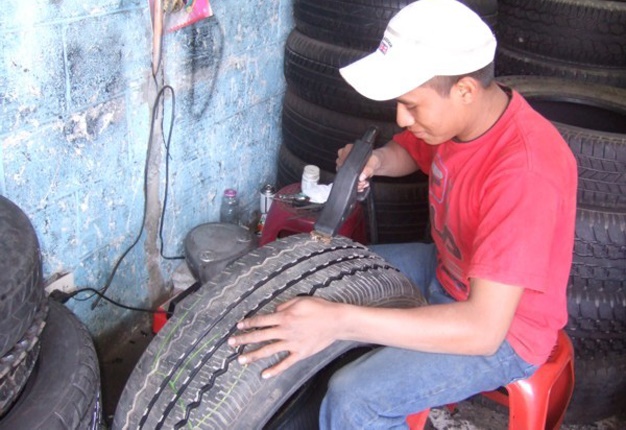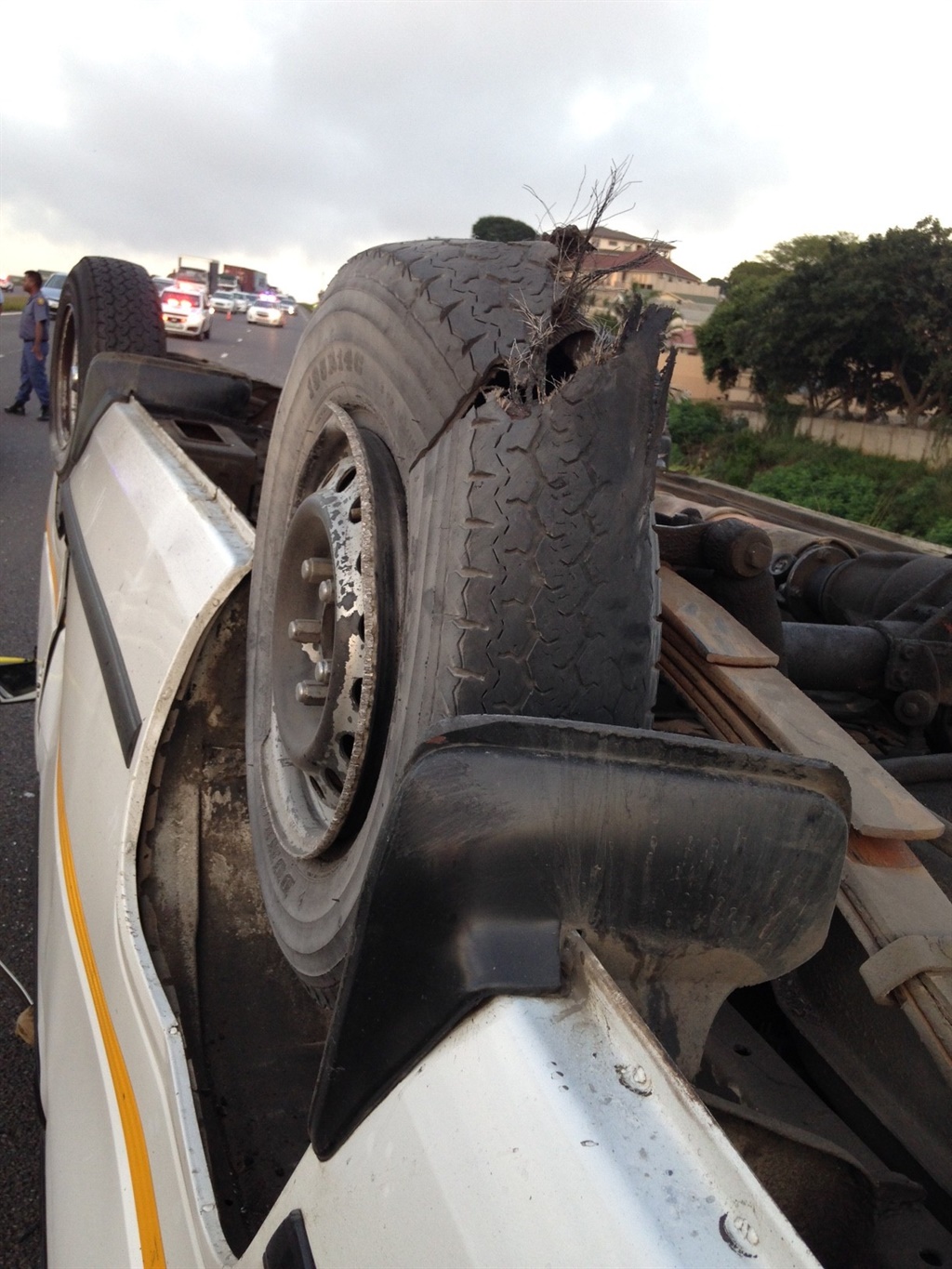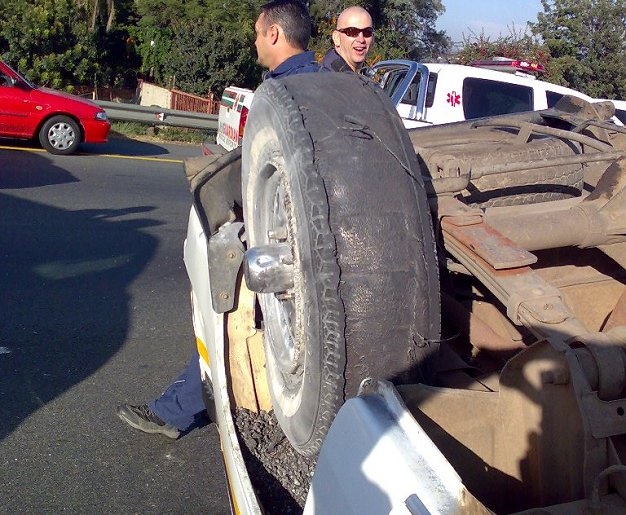
Cape Town - Second-hand tyres and re-grooved tyres are one of the biggest dangers to safety on our roads, says Riaz Haffejee, CEO of Sumitomo Rubber South Africa - one of the leading tyre manufacturers and parent company of Dunlop tyres in South Africa.
His warning comes during Transport Month when safe driving is promoted nationally and on the eve of the year-end holiday season when there is carnage on the roads.
About 1755 people were killed on South African roads during the 2015 holiday period.
Safety first
Johan Jonck from Arrive Alive said: "Of all the vehicle safety aspects the tyres are most probably the most important ones but often overlooked. Drivers tend to forget that the four impact points (tyres) of their vehicle on the road surface are only the size of four A4 pages.
"The condition of the tyres along with the ability to remain safely on the ground also impacts on braking distance, steering, cornering etc. The stats also emphasize why it is important for enforcement to focus on vehicle roadworthiness through regular vehicle checks. Worn tyres will not be detected by a speed camera - our officers need to check and remove vehicles with non-roadworthy tyres.
"We should acknowledge the contribution made more recently by the private sector with the brake and Tyre Watch initiative where traffic officers receive theoretical and practical training on truck roadworthiness and tyre safety!"
Do you use second-hand tyres? Have you witnessed or experienced a tyre blow-out? Email us or get in touch via Facebook and Twitter.
Image: Arrive Alive
Cheap not always safe
Often a more cost effective alternative to purchasing brand new tyres, second-hand or “part-worn” tyres may present a more viable option for cash-strapped motor owners to replace tyres. However, what one may regard as a financial advantage, could cost them on the road, says Haffejee.
The contribution of poor tyre conditions to road accident statistics is alarming. In a report released by the Road Traffic Management Corporation for the period December - January 2015, it was revealed that vehicle factors contributed to 7.8% of all road fatalities, of which 78% was due to tyre-related issues such as smooth tyres and burst tyres.
READ: Safe tyres can reduce 'road carnage in South Africa' - AA
Haffejee said: “The use of second hand tyres is a massive cause for concern and is a malady plaguing South Africa’s informal sector at present.
“Consumers may make potentially life-threatening purchase decisions when buying second-hand tyres as tread depth can be dangerously low, resulting in aquaplaning on wet roads. In addition, the buyer has no knowledge of the tyre’s age or repair history which can be equally dangerous."
Image: Arrive Alive
The illegal - and highly dangerous - practice of “re-grooving” tyres to create greater tread depth is one of the most common traits in second-hand tyres, and presents a considerable hazard to tyre condition.
Often more prevalent in the informal sector, re-grooving constitutes the re-creation of tread depth, often done by means of a sharp object, such as a knife or screwdriver, that has been heated to melt away the rubber.
Dangers motorist face
Tyre aging is another less-known factor that second-hand tyre consumers do not consider. After a period of time, the strength of a tyre is compromised and becomes brittle due to environmental exposure such sunlight, ozone factors, and oxygen. Such tyres are more likely to result in weak spots which often lead to burst tyres.
READ: Worn tyres - A killer on the road
Repaired tyres are also another characteristic in the second-hand tyre market, which result in weaker tyres. In many cases, adhesives like super glue is used to repair rips and tears in tyres, and sold to unsuspecting consumers - which is highly dangerous for all road users. The acknowledgement of part-worn tyres by government highlights that this is being recognised as a serious agenda affecting road safety.
Late in 2015, the South African Tyre Manufacturers Conference (SATMC) informed the Department of Trade and Industry’s (DTI) Portfolio Committee that there was a national economic imperative and public interest for the formulation of a part-worn standard for second hand tyres.
Do you use second-hand tyres? Have you witnessed or experienced a tyre blow-out? Email us or get in touch via Facebook and Twitter.
Joanmariae Fubbs, committee chairperson, said: “Everyone remains concerned about road accidents in the country. The safety of our citizens comes first." This was in support of the concerns raised by SATMC.
Improving road safety
Haffejee, who is also the chairperson of SATMC, said that the introduction of such standards and controls could improve the regulated sale of second hand tyres, minimise the importation of substandard tyres, and could contribute significantly in improving road safety and consumer protection.
While strides have been made in this regard with the assistance of the DTI and other parties, much of the pressure to create awareness on the dangers of second hand and retreaded tyres lies with manufacturers.
READ: Beat the petrol price with these tyre tips
Submissions have been made to the National Regulator for Compulsory Specifications (NRCS) to formulate a part-worn standard which has been agreed to with the industry, and NRCS is now starting the regulatory process for part-worn tyres.
Haffejee added: “At SRSA, we are committed to safety in everything we do, from manufacturing and operational practices to the engineering of durable, quality products that adhere to the highest global safety standards, right down to rigorous training programmes that are aimed at upskilling fitment experts at our retail Dunlop franchises like Dunlop Zone and Dunlop Express.
“We hope that safer roads, fewer fatalities and the interests of the public can be preserved through such measures."
Image: iStock
6 basic rules on tyre safety:
1 Tyres should always be replaced with the same size designation as recommended by the vehicle or tyre manufacturer.
2 Tyre brand, size and tread pattern must be the same on each axle.
3 All four tyres should be of the same size, speed rating and construction (radial or cross ply).
4 Guard against used tyre imports, many of which are beyond retreading but are retreaded and sold illicitly. Similarly watch out for counterfeit tyres - illicit copies of respected brands. The advice is to always look for the SABS stamp of approval.
5 When two radial tyres are used with two cross ply, put the radials on the rear axle. In some cases (especially commercial vehicles) the manufacturer might recommend different-sized tyres for the front and rear axles.
6 Never assume that the tyres on your vehicle are correct, even if you have newly purchased it. Unless you bought new from an authorised dealer your vehicle may already be fitted with potentially lethal tyres.
For more guides and lists on tyre safety, visit the Arrive Alive website.




 Publications
Publications
 Partners
Partners


















